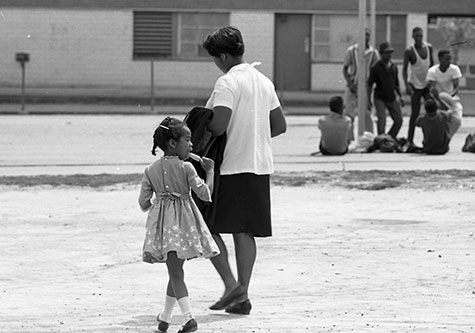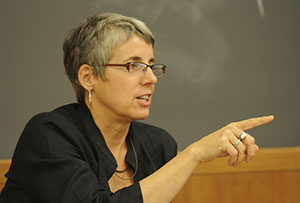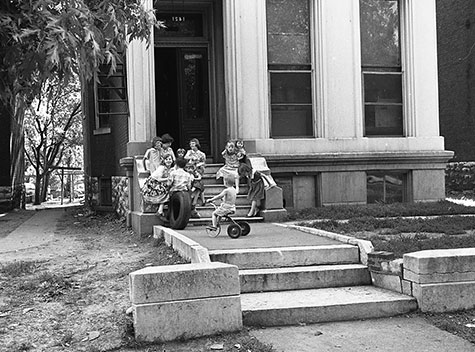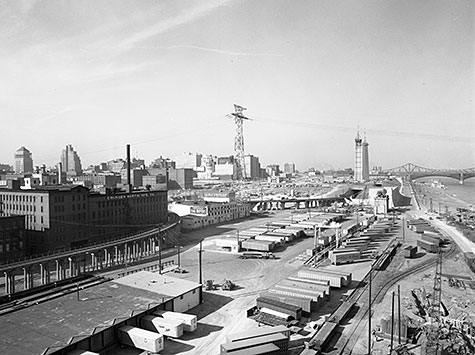
Legal segregation may be over, but segregation is hardly a thing of the past. The scars are deep and continue to divide along racial, cultural and economic lines.
This fall, Washington University in St. Louis will launch “The Divided City: An Urban Humanities Initiative.” The $1.6 million project — funded in part by a four-year, $650,000 grant from the Mellon Foundation — will examine both the history and present-day reality of segregation from a variety of perspectives, including architecture, anthropology, business, economics, landscape architecture, law, public health, social work and urban design.

“St. Louis is a particularly resonant place from which to pose these questions,” said Jean Allman, PhD, director of the Center for the Humanities in Arts & Sciences — and, with Bruce Lindsey, dean of architecture in the Sam Fox School of Design & Visual Arts, principal investigator on the grant.
“It sits on the border between north and south,” said Allman, the J.H. Hexter Professor in the Humanities and professor of history. “It has profound legacies of racism and segregation, of expansion and decline.”
The city also has seen many important — and several infamous — milestones in U.S. race relations. These range from the Dred Scott case (1857) to Shelley v. Kraemer (1948, which outlawed racially restrictive real estate covenants) to continuing unrest in Ferguson, Mo., surrounding the August death of teenager Michael Brown.
“Segregation remains one of the most vexing problems in urban studies,” said Lindsey, the E. Desmond Lee Professor for Community Collaboration.

“By segregation, we mean not only racial separation in the United States or South Africa, but persistent and widespread issues related to spatial and cultural isolation and fragmentation,” Lindsey said.
“Segregation in this broad sense continues to play out in housing, in environmental risk, in access to food, transit, health care, education and other basic services.”
Said Allman, “Today, for the first time in history, the majority of humanity lives in cities and urban areas. The Divided City takes St. Louis as a base, but also looks at a range of global cities like Shanghai, Johannesburg, Nairobi, and Rio (de Janeiro).
“These are global issues,” Allman said. “Our aim is to create a model for the urban humanities that will shape scholarship, teaching and policy initiatives across the globe.”

The Divided City: An Urban Humanities Initiative
In addition to the Mellon grant, The Divided City is supported by the Office of the Provost; the College of Arts & Sciences; and the College of Architecture and Graduate School of Architecture & Urban Design, both in the Sam Fox School School of Design & Visual Arts.
Major initiatives will include a series of collaborative faculty grants; a summer seminar in the urban humanities; an oral history research project; a public life survey; the development of new curricula, at both university and K-12 levels; a Divided City digital archive; and, eventually, a multimedia exhibition curated by faculty and students.
Organizers also plan two new faculty hires — one in the urban humanities and one in urban design — as well as a postdoctoral fellowship. The latter will take primary responsibility for the digitizing and archiving of St. Louis-based African-American newspapers, including The St. Louis American, The Argus, The Evening Whirl, The Limelight and The East St. Louis Monitor.
Faculty grants
For each year of the project, the Center for the Humanities, the College of Architecture and the Graduate School of Architecture & Urban Design will award several collaborative faculty grants of up to $20,000 each.
Proposals must be interdisciplinary in nature, involving the humanities and at least one other discipline, with particular consideration going to projects that engage architecture or urban design. Grants may be used to support research relating to urban segregation/separation; to develop interdisciplinary curricula; or to build connections between the university and the St. Louis community, especially K-12 schools and cultural institutions.
All recipients, as part of their collaborative work, are required to produce a community-based public humanities project, or to contribute material to The Divided City online project, which is currently in development.
Grant proposals are due by Dec. 1. The first round of recipients will be announced in January.
For more information, contact the Center for the Humanities or visit here.
